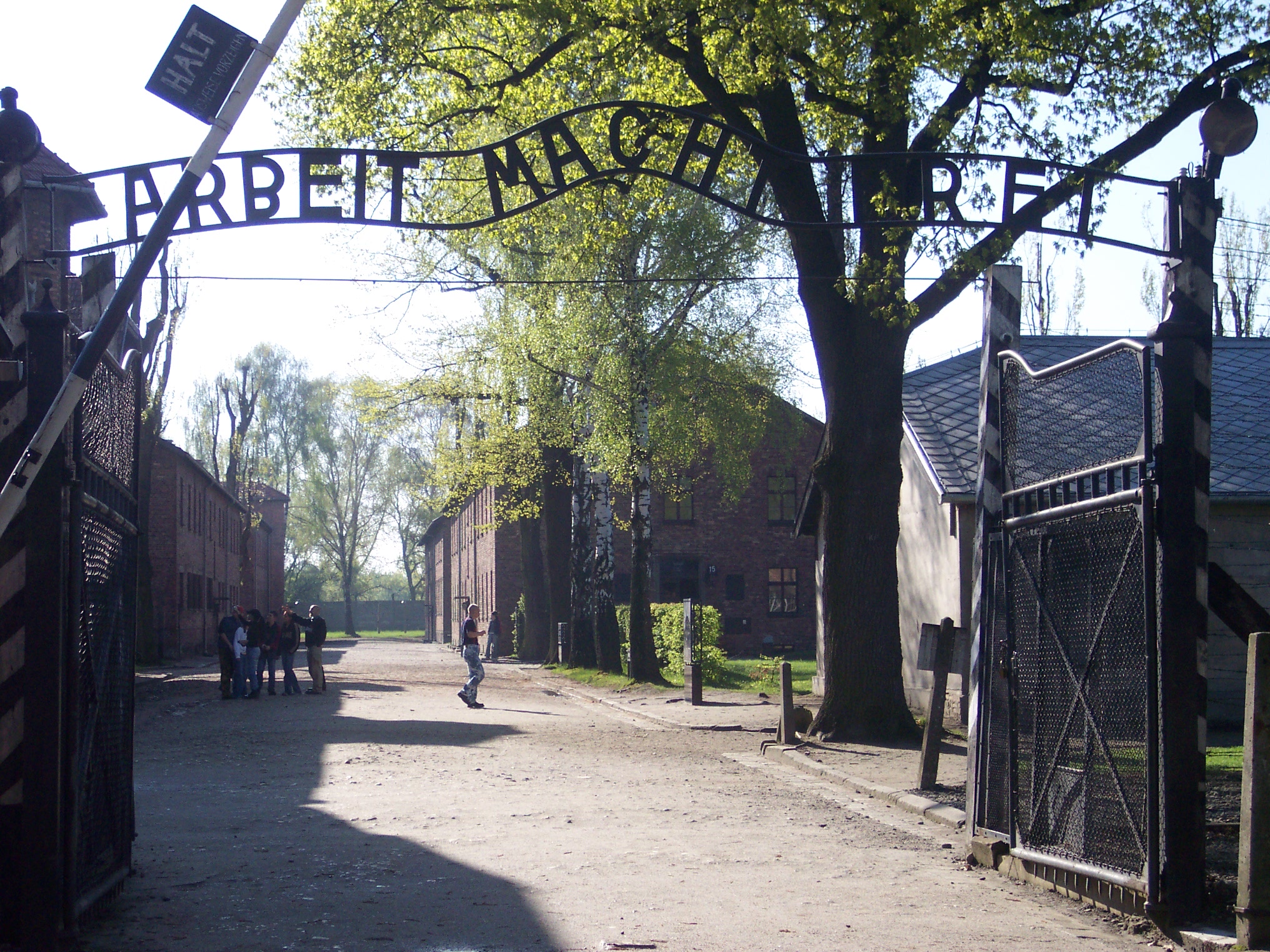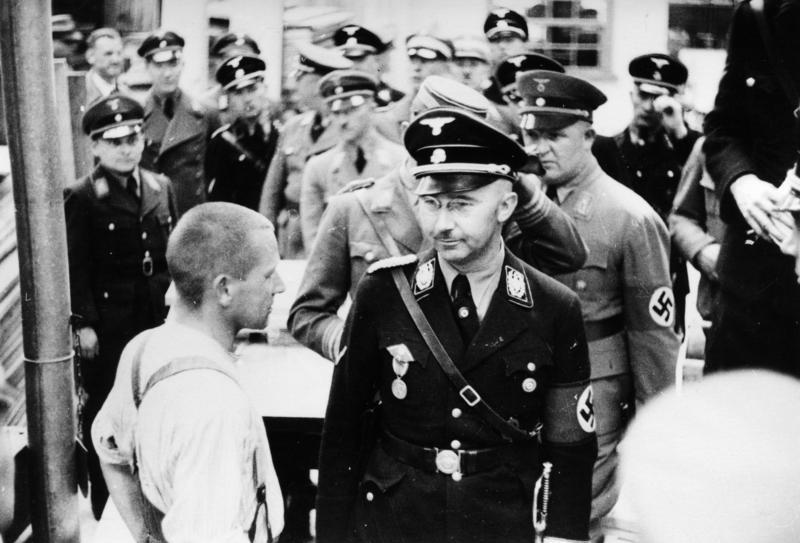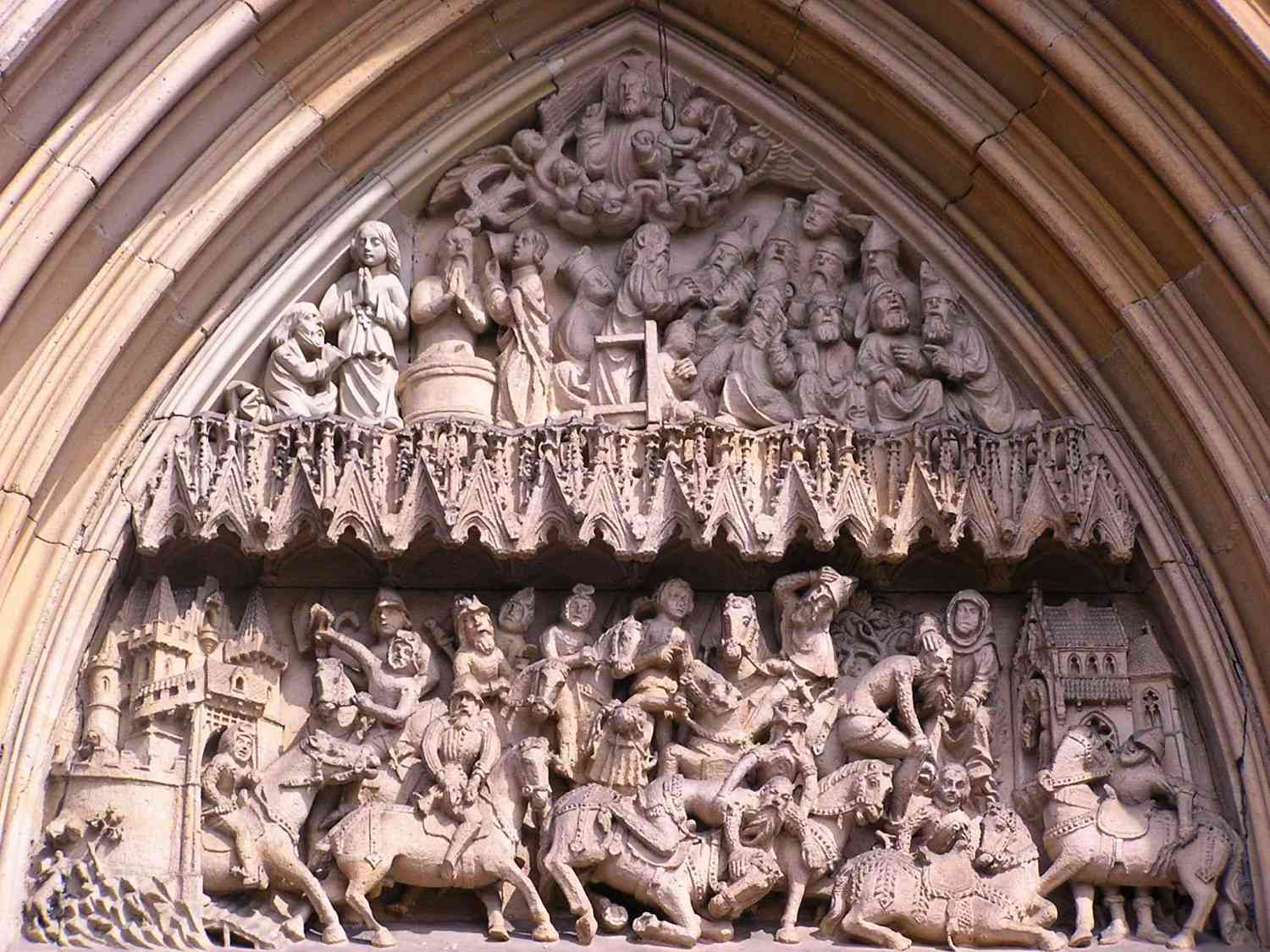|
Gross-Rosen
, known for = , location = , built by = , operated by = , commandant = , original use = , construction = , in operation = Summer of 1940 – 14 February 1945 , gas chambers = , prisoner type = mostly Jews, Poles and Soviet citizens , inmates = 125,000 (in estimated 100 subcamps) , killed = 40,000 , liberated by = , notable inmates = Boris Braun, Adam Dulęba, Franciszek Duszeńko, Heda Margolius Kovály, Władysław Ślebodziński, Simon Wiesenthal, Rabbi Shlomo Zev Zweigenhaft , notable books = , website = Gross-Rosen was a network of Nazi concentration camps built and operated by Nazi Germany during World War II. The main camp was located in the German village of Gross-Rosen, now the modern-day Rogoźnica in Lower Silesian Voivodeship, Poland; directly on the rail-line between the towns of Jawor (Jauer) and Strzegom (Striegau ... [...More Info...] [...Related Items...] OR: [Wikipedia] [Google] [Baidu] |
Gross Rosen (b&w)
, known for = , location = , built by = , operated by = , commandant = , original use = , construction = , in operation = Summer of 1940 – 14 February 1945 , gas chambers = , prisoner type = mostly Jews, Poles and Soviet citizens , inmates = 125,000 (in estimated 100 subcamps) , killed = 40,000 , liberated by = , notable inmates = Boris Braun, Adam Dulęba, Franciszek Duszeńko, Heda Margolius Kovály, Władysław Ślebodziński, Simon Wiesenthal, Rabbi Shlomo Zev Zweigenhaft , notable books = , website = Gross-Rosen was a network of Nazi concentration camps built and operated by Nazi Germany during World War II. The main camp was located in the German village of Gross-Rosen, now the modern-day Rogoźnica in Lower Silesian Voivodeship, Poland; directly on the rail-line between the towns of Jawor (Jauer) and Strzegom (Striegau ... [...More Info...] [...Related Items...] OR: [Wikipedia] [Google] [Baidu] |
Rogoźnica, Lower Silesian Voivodeship
Rogoźnica (; german: Groß Rosen) is a village in the administrative district of Gmina Strzegom, within Świdnica County, Lower Silesian Voivodeship, in south-western Poland. Rogoźnica lies approximately north-west of Strzegom, north-west of Świdnica, and west of the regional capital Wrocław. The village has a population of 856. The oldest known mention of Rogoźnica comes from a document from 1291. It was also mentioned in the medieval Polish chronicle ''Liber fundationis episcopatus Vratislaviensis'', created a few years later. It was part of medieval Poland ruled by the Piast dynasty. In later periods the village was also part of Bohemia, Hungary, Austria, Prussia and Germany, before being reintegrated with Poland in 1945 after the defeat of Nazi Germany in World War II. There are two historic churches in the village: the church of Simon and Jude Thaddeus and the church of Our Lady of the Rosary. Gross-Rosen During World War II Rogoźnica was the site of the Nazi Germa ... [...More Info...] [...Related Items...] OR: [Wikipedia] [Google] [Baidu] |
Adam Dulęba
Adam Franciszek Mikołaj Dulęba (6 December 1895 – end of March 1944 in the Gross-Rosen concentration camp) was a Polish photographer, officer of the Polish Legions, soldier of Armia Krajowa; known under the pseudonym Góral. Adam Dulęba was the photographer and chronicler of the Polish Legions. He photographed, among others, Józef Piłsudski and Edward Rydz-Śmigły. He was awarded the Cross of Independence on 5 August 1937. Work as a photographer During his service in the Polish Legions Dulęba worked at the press office of the Legions' headquarters. He photographed and documented everyday life of the soldiers stationed there. Dulęba's pictures had preserved not only military marches, but also battle preparations and the battles themselves, everyday activities of Marshal Józef Piłsudski, patriotic manifestations and funerals of soldiers of the First Brigade. His photographs had immortalized the following figures: Edward Rydz-Śmigły, Kazimierz Sosnkowski, Jó ... [...More Info...] [...Related Items...] OR: [Wikipedia] [Google] [Baidu] |
Arthur Rödl
Arthur Rödl (13 June 1898 – 5 April 1945) was a German ''Standartenführer'' (Colonel) in the Waffen-SS and a Nazi concentration camp commandant. Rödl was born into a Catholic family. His father worked as a messenger and his mother ran a newsstand. The stand closed when Rödl was ten, and he was told by his mother that it had shut down as she could not compete with a nearby stand run by a Jew. The incident helped to instill a sense of anti-Semitism in the young Rödl, who was involved in extreme nationalist groups from an early age.Tom Segev, ''Soldiers of Evil'', Berkley Books, 1991, pg. 135. Rödl was apprenticed to a blacksmith when World War I broke out. He soon enlisted in the German Imperial Army by forging his age on his documents after initially being rejected for being only 16. He was seriously wounded at least once during the war, and was demobilized at the age of 20. He eventually worked for the post office. Rödl quickly returned to far right activism and joined ... [...More Info...] [...Related Items...] OR: [Wikipedia] [Google] [Baidu] |
Johannes Hassebroek
Johannes Hassebroek (11 July 1910, in Halle, Saxony-Anhalt – 17 April 1977, in Westerstede) was a German SS commander during the Nazi era. He served as a commandant of the Gross-Rosen concentration camp and its sub-camps from October 1943 until the end of the war. Hassebroek was tried for his crimes by the British occupational authorities, convicted to life imprisonment, and released in 1954. The later prosecution by the West German authorities proved unsuccessful. Early years Hassebroek was born in Halle, and was the son of a prison guard who had joined '' Der Stahlhelm'' after his service in the First World War. He encouraged his son to become involved in right-wing politics, and enrolled him in the conservative ''Bismarckbund'' youth movement.Tom Segev, ''Soldiers of Evil'', Berkley Books, 1991, pg. 179 The young Hassebroek also attempted to enlist in the army but was rejected, due largely to the reduction in size ordered by the terms of the Treaty of Versailles, and as such ... [...More Info...] [...Related Items...] OR: [Wikipedia] [Google] [Baidu] |
Nazi Concentration Camp
From 1933 to 1945, Nazi Germany operated more than a thousand concentration camps, (officially) or (more commonly). The Nazi concentration camps are distinguished from other types of Nazi camps such as forced-labor camps, as well as concentration camps operated by Germany's allies. on its own territory and in parts of German-occupied Europe. The first camps were established in March 1933 immediately after Adolf Hitler became Chancellor of Germany. Following the Night of Long Knives, 1934 purge of the Sturmabteilung, SA, the concentration camps were run exclusively by the SS via the Concentration Camps Inspectorate and later the SS Main Economic and Administrative Office. Initially, most prisoners were members of the Communist Party of Germany, but as time went on different groups were arrested, including "habitual criminals", "asocials", and Jews. After the beginning of World War II, people from German-occupied Europe were imprisoned in the concentration camps. Following A ... [...More Info...] [...Related Items...] OR: [Wikipedia] [Google] [Baidu] |
Wilhelm Gideon
Wilhelm Gideon (15 November 1898, in Oldenburg – 23 February 1977) was a Schutzstaffel officer and Nazi concentration camp commandant. A native of Oldenburg in the state of Lower Saxony, Gideon began work as a trainee engineer but had his studies ended by the outbreak of World War I, when he volunteered for service in the German Imperial Army. Gideon enlisted in the SS in 1933 (member number 88,657) and the Nazi Party in 1937 (member 4,432,258).Wilhelm Gideon profile accessed 14 March 2022. He had various posts in the SS, initially being stationed with the 9th SS-Reiterstandarte (cavalry) from 1934 to 1939. Following this, he was moved to the ... [...More Info...] [...Related Items...] OR: [Wikipedia] [Google] [Baidu] |
Arbeit Macht Frei
() is a German phrase meaning "Work sets you free" or "Work makes one free". The slogan is known for appearing on the entrance of Auschwitz and other Nazi concentration camps. Origin The expression comes from the title of an 1873 novel by German philologist Lorenz Diefenbach, , in which gamblers and fraudsters find the path to virtue through labour. The phrase was also used in French () by Auguste Forel, a Swiss entomologist, neuroanatomist and psychiatrist, in his ( en, Ants of Switzerland, link=no) (1920). In 1922, the of Vienna, an ethnic nationalist "protective" organization of Germans within Austria, printed membership stamps with the phrase . The phrase is also evocative of the medieval German principle of ("urban air makes you free"), according to which serfs were liberated after being a city resident for one year and one day. Use by the Nazis In 1933 the first communist prisoners were being rounded up for an indefinite period without charges. They were held ... [...More Info...] [...Related Items...] OR: [Wikipedia] [Google] [Baidu] |
Nazi Concentration Camps
From 1933 to 1945, Nazi Germany operated more than a thousand concentration camps, (officially) or (more commonly). The Nazi concentration camps are distinguished from other types of Nazi camps such as forced-labor camps, as well as concentration camps operated by Germany's allies. on its own territory and in parts of German-occupied Europe. The first camps were established in March 1933 immediately after Adolf Hitler became Chancellor of Germany. Following the Night of Long Knives, 1934 purge of the Sturmabteilung, SA, the concentration camps were run exclusively by the SS via the Concentration Camps Inspectorate and later the SS Main Economic and Administrative Office. Initially, most prisoners were members of the Communist Party of Germany, but as time went on different groups were arrested, including "habitual criminals", "asocials", and Jews. After the beginning of World War II, people from German-occupied Europe were imprisoned in the concentration camps. Following A ... [...More Info...] [...Related Items...] OR: [Wikipedia] [Google] [Baidu] |
Simon Wiesenthal
Simon Wiesenthal (31 December 190820 September 2005) was a Jewish Austrian Holocaust survivor, Nazi hunter, and writer. He studied architecture and was living in Lwów at the outbreak of World War II. He survived the Janowska concentration camp (late 1941 to September 1944), the Kraków-Płaszów concentration camp (September to October 1944), the Gross-Rosen concentration camp, a death march to Chemnitz, Buchenwald, and the Mauthausen concentration camp (February to 5 May 1945). After the war, Wiesenthal dedicated his life to tracking down and gathering information on fugitive Nazi war criminals so that they could be brought to trial. In 1947, he co-founded the Jewish Historical Documentation Centre in Linz, Austria, where he and others gathered information for future war crime trials and aided refugees in their search for lost relatives. He opened the Documentation Centre of the Association of Jewish Victims of the Nazi Regime in Vienna in 1961 and continued to try to loca ... [...More Info...] [...Related Items...] OR: [Wikipedia] [Google] [Baidu] |
Strzegom
Strzegom (german: Striegau) is a town in Świdnica County, Lower Silesian Voivodeship, in south-western Poland. It is the seat of the Gmina Strzegom administrative district ( gmina). It lies approximately north-west of Świdnica, and west of the regional capital Wrocław. As of 2019, the town had a population of 16,106. History Middle Ages Traces of settlement on the site during the Roman Empire period have been found. In the Middle Ages it was a fortified settlement under the rule of a castellan, founded in the 10th century, as part of Piast Poland, first mentioned in a deed issued by Pope Hadrian IV in 1155, confirming the boundaries of the Wrocław diocese. Its name is of Polish origin and comes either from the words ''strzec'' ("guard"), ''strzyc głowy'' ("cut hair") or ''trzy góry'' ("three mountains"). As a result of the fragmentation of Poland into smaller duchies, Strzegom became part of the Duchy of Silesia in the 12th century. The Piast Castle was built at tha ... [...More Info...] [...Related Items...] OR: [Wikipedia] [Google] [Baidu] |
Heda Margolius Kovály
Heda Margolius Kovály (15 September 1919 – 5 December 2010 Grimes, William (9 December 2010). '' The New York Times''.) was a Czech writer and translator. She survived the Łódź ghetto and Auschwitz where her parents died. She later escaped whilst being marched to Bergen-Belsen to find that no one would take her in. Her husband was made a deputy minister in Czechoslovakia and he was then hanged as a traitor. As the wife of disgraced man she married again and she and her husband were treated badly. They left for the US in 1968 when the country was invaded by the Warsaw Pact countries. She published her biography in 1973. She and her husband did not return to her homeland until 1996. Early life She was born Heda Bloch to Jewish parents in Prague, Czechoslovakia, where she lived until 1941 when her family was rounded up along with first 5,000 of the city's Jewish population and taken to the Lodz Ghetto in central Poland. Concentration-camp and Margolius-marriage years ... [...More Info...] [...Related Items...] OR: [Wikipedia] [Google] [Baidu] |
.jpg)




.jpg)
